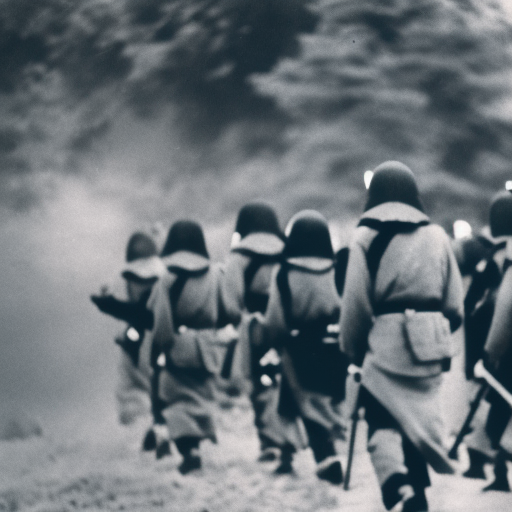Battle of Nagashino: A Turning Point in Japanese Warfare
The Battle of Nagashino, which took place on June 28, 1575, was a significant turning point in Japanese warfare. It marked the first successful use of firearms in a large-scale battle and demonstrated the effectiveness of combined arms tactics. The battle was fought between the forces of Oda Nobunaga and Takeda Katsuyori, two powerful warlords vying for control over Japan during the Sengoku period.
Background
Oda Nobunaga, a brilliant military strategist, sought to unify Japan under his rule. Takeda Katsuyori, the son of the renowned Takeda Shingen, was one of Nobunaga’s most formidable rivals. The Takeda clan had a reputation for their cavalry prowess and had been successful in previous battles. Nobunaga recognized the need to neutralize this threat and devised a strategy to counter the Takeda cavalry.
The Battle
Nobunaga’s forces established a fortified position at Nagashino Castle, located on a plain with limited cover. Recognizing the vulnerability of his infantry to the Takeda cavalry charges, Nobunaga ordered the construction of a series of wooden palisades and trenches to protect his troops. He also positioned a large number of arquebusiers, or matchlock gunners, behind the defenses.
As the Takeda forces approached, they launched several cavalry charges, but were met with a hail of gunfire from the arquebusiers. The Takeda cavalry, unaccustomed to facing such a deadly and long-range weapon, suffered heavy casualties. The arquebusiers, protected by the palisades, were able to reload and fire in volleys, devastating the Takeda ranks.
Combined Arms Tactics
The Battle of Nagashino showcased the effectiveness of combined arms tactics. Nobunaga’s forces combined the firepower of firearms with the protection of fortifications to neutralize the Takeda cavalry charges. The arquebusiers provided a deadly long-range weapon, while the fortifications offered protection and allowed for a steady rate of fire.
Furthermore, Nobunaga’s forces also utilized spearmen and ashigaru, or foot soldiers armed with spears and matchlock guns, to counter any Takeda troops who managed to breach the defenses. This combination of firearms, fortifications, and infantry proved to be a winning strategy against the Takeda cavalry.
Outcome and Legacy
The Battle of Nagashino resulted in a decisive victory for Oda Nobunaga. Takeda Katsuyori’s forces suffered heavy losses, including many of their renowned cavalry. This defeat weakened the Takeda clan and significantly diminished their power and influence.
The battle also had broader implications for Japanese warfare. The success of firearms in the battle demonstrated their potential as a game-changing weapon. It marked a shift in the balance of power, as traditional cavalry-based tactics became less effective against the firepower of firearms and the protection offered by fortifications.
The Battle of Nagashino paved the way for the widespread adoption of firearms in Japanese warfare. It led to the development of new tactics and strategies that incorporated firearms into battle plans. The battle also highlighted the importance of combined arms tactics, emphasizing the need for coordination between different types of troops to achieve victory.
In conclusion, the Battle of Nagashino was a pivotal moment in Japanese warfare. It showcased the effectiveness of firearms and combined arms tactics, leading to their widespread adoption in subsequent battles. Oda Nobunaga’s victory at Nagashino not only weakened the Takeda clan but also changed the course of Japanese military history.












